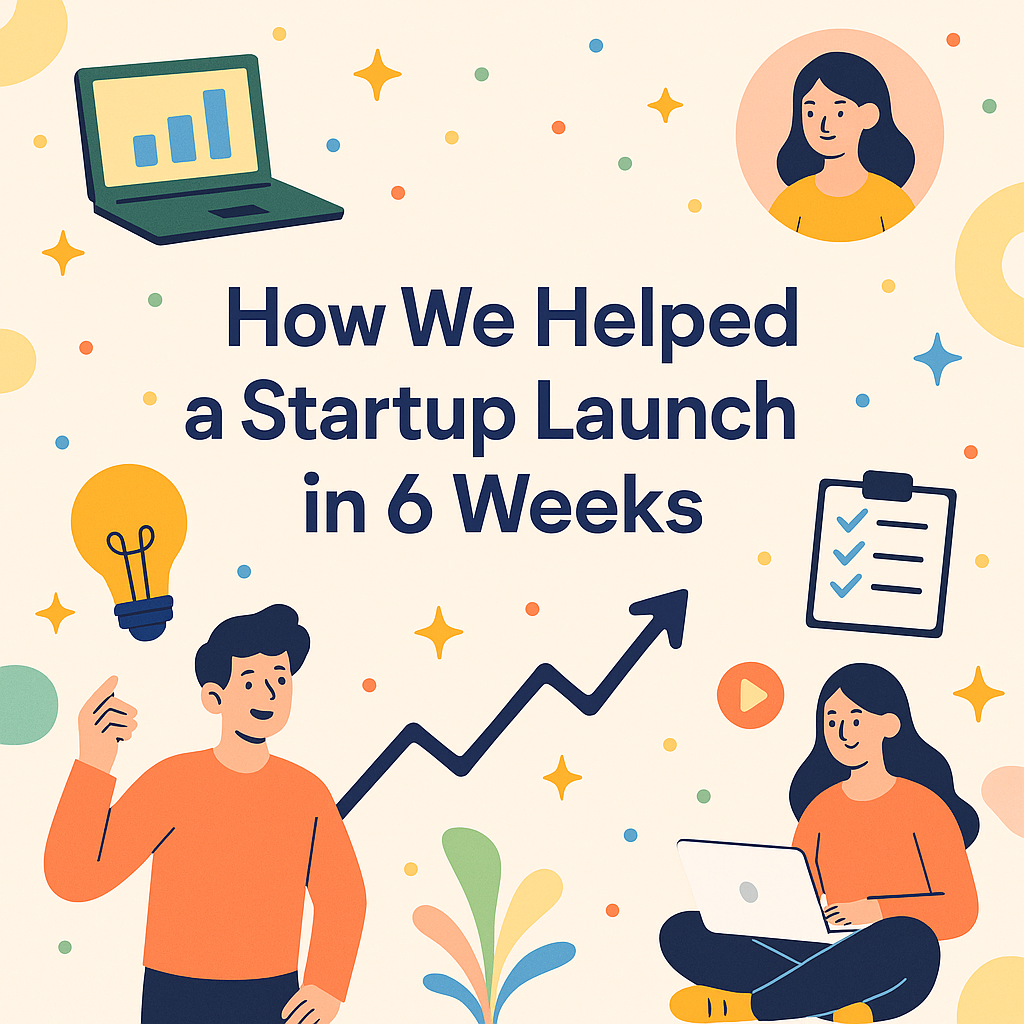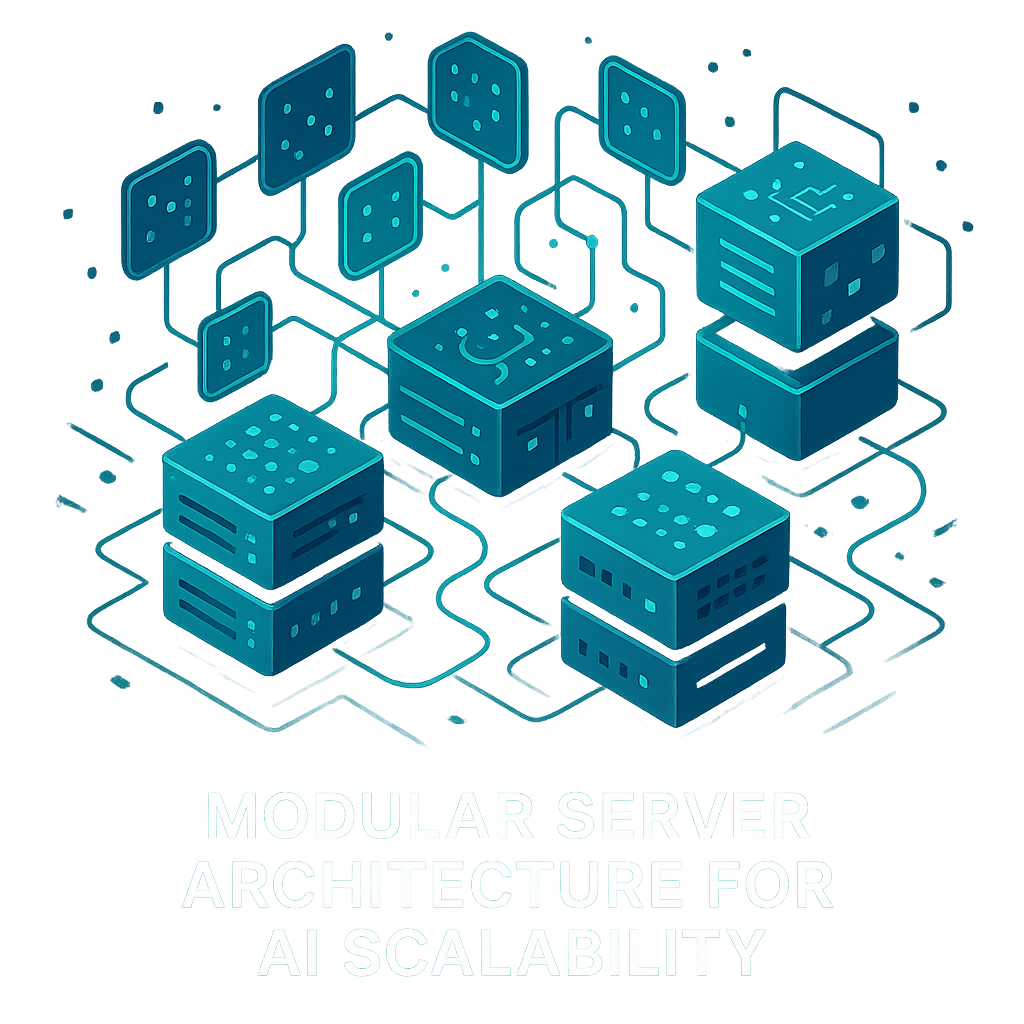How We Helped a Startup Launch in 6 Weeks

Key Takeaways
- A six-week sprint model enables rapid startup launches by focusing on lean validation, intense goal setting, and eliminating unnecessary features.
- Happly.ai validated its core idea quickly through structured customer interviews and feedback-driven iterations instead of speculative development.
- The "release-twice" strategy within the sprint cycle allowed the team to gather real-world data early and course-correct before public launch.
- AI automation tools like GrantGPT significantly accelerated development by simplifying repetitive tasks and enhancing user experience.
- This sprint-driven approach built a real, usable product with active users in just 6 weeks, proving that speed and quality can coexist in startup execution.
From concept to a zero-dilutive funding launch in just six weeks. It sounds like a startup fantasy, but for the innovative team at Happly.ai, it became a reality. In a market where speed is survival, waiting six months to launch is a luxury no tech company can afford. This is the story of how we embraced a hyper-focused, six-week sprint methodology to take Happly.ai from a brilliant idea to a market-ready, AI-powered funding platform.
Happly.ai is an intelligent matching platform designed to connect startups, non-profits, and researchers with non-dilutive funding sources like grants and government incentives. Its core mission is to automate the painful, time-consuming process of finding and applying for funding, using AI to deliver precise matches and even assist in application writing. The challenge was clear: launch quickly to validate the concept, gather real-world user data, and establish a foothold before competitors could emerge.
This case study breaks down the exact framework we used, a framework that any ambitious startup can leverage to turn ideas into impact, fast.
Example: As an applied AI company focused on lean innovation, we helped Happly.ai build and launch their AI funding assistant in just six weeks. Led by our software developers in Toronto, we leveraged agile product practices and fast prototyping.
Why a Six-Week Approach Works (and Why Six Months Doesn’t)
Many startups waste months choosing the best consulting software or planning tools without building anything—our approach flips that script.. The traditional product development lifecycle, often spanning six months or more, is fraught with peril. It assumes a static market and perfect foresight—two things that simply don't exist in the fast-paced world of AI and SaaS. A lengthy development cycle often leads to building in a vacuum, resulting in a product that’s misaligned with user needs by the time it finally launches. You risk burning through capital, demotivating your team, and ultimately, shipping the wrong thing. Short sprints work exceptionally well for cloud development and operations because they minimize deployment delays and ensure faster iteration cycles.
We drew inspiration from thought leaders like Alex Cowan and established frameworks highlighted in publications like Entrepreneur, which champion shorter, more intense cycles. A condensed 4-to-6 week sprint offers transformative advantages:
- Intense Focus: With a six-week deadline, there is no room for distraction. The entire team—from developers to marketers—is singularly focused on a clear, achievable goal. This eliminates the "context switching" that kills productivity in longer projects.
- Rapid Validation: The core purpose of an early launch is learning. A six-week sprint forces you to identify your riskiest assumptions and test them with real users within weeks, not months. This allows you to validate your core value proposition before investing significant resources.
- Reduced Wasted Effort: The sprint model inherently minimizes waste. By focusing only on the essential features for an MVP (Minimum Viable Product), you avoid building complex functionalities that users may not even want. Technical debt is kept low, and engineering hours are spent on what truly matters.
- The "Release-Twice" Strategy: A key insight from Entrepreneur's six-week sprint model is the concept of releasing twice within the cycle. The first release, a beta version to a small user group, happens mid-sprint. This provides critical, real-world feedback early enough to iterate and improve for the final, wider release in week six. This built-in feedback loop is the antidote to building in isolation.
- Elimination of the Backlog: As Buffer has noted in its own six-week cycle implementation, this approach effectively eliminates the ever-growing, demoralizing backlog. Each cycle is a clean slate. You plan for six weeks, you build for six weeks, and then you plan anew based on fresh data and strategic goals.
For Happly.ai, this agile, high-velocity model was not just an option; it was the only path forward to seize the market opportunity for an AI-based grant matching platform.

The Week-by-Week Sprint Breakdown: Building Happly.ai
In Weeks 2–3, we began custom software design and development for Happly.ai’s core grant matching engine. We structured the entire engagement into six distinct, one-week phases. Each week had a primary objective, moving Happly.ai methodically from idea to a functional product with active users.
Week 0–1: Define & Validate
The first week wasn't about writing a single line of code. It was about deep immersion and validation. Following principles from the Lean Startup methodology, our initial goal was to pressure-test Happly.ai's core assumptions through rigorous customer discovery.
- Clarifying the Value Proposition: We started with the hypothesis: "We can save grant writers and startup founders 20+ hours per month by using AI to find hyper-relevant grants." We needed to confirm if this was the right problem to solve.
- Customer Discovery Interviews: We conducted over a dozen interviews with our target segments: professional grant writers, founders in the biotech and climate-tech sectors, and university research administrators. We listened to their frustrations with existing tools (or lack thereof). Key pain points emerged: the sheer volume of irrelevant grant opportunities, the complexity of eligibility criteria, and the repetitive nature of writing proposals.
- Mapping the Onboarding Flow: Based on this feedback, we mapped out the ideal user journey. What was the absolute simplest way for a user to sign up, input their project details, and see their first set of matched grants? We whiteboarded a flow that minimized friction at every step, focusing on immediate time-to-value. This foundational work, guided by frameworks from startup experts like Alex Cowan, ensured we were building a solution for a real, validated need.
Week 2: MVP Planning & Goal Setting
With a validated direction, week two was dedicated entirely to planning. As Buffer advocates, separating planning from execution is critical for focus. We translated our learnings from week one into a concrete technical roadmap for the MVP.
- Defining Core Features: We ruthlessly prioritized. To deliver on the core value proposition, the MVP needed just two killer features:
- The AI Match Dashboard: An intuitive interface where users see a prioritized list of funding opportunities, scored for relevance based on their profile and project data.
- GrantGPT Autofill Extension: A simple Chrome extension that could extract key fields from a grant application portal and suggest AI-generated text for common sections (e.g., organization summary, project abstract).3
- Setting the Milestone: Our clear, measurable goal for the sprint was established: "By the end of Week 4, a pilot user can successfully onboard, see at least five relevant grant matches, and use the GrantGPT extension to autofill one application field." This concrete milestone aligned the entire team and defined what "done" looked like for our first release. All other feature ideas—user collaboration, budget planners, reporting tools—were intentionally placed in a "Not Now" list.
Weeks 3–4: First Build & Beta Release ("Release #1")
These two weeks were pure execution. The team entered a "heads-down" build phase, focused exclusively on developing the AI Match Dashboard and the GrantGPT extension. The front-end team built the user interface in React, while the back-end team fine-tuned the matching algorithm and connected it to a curated database of grants.
By the end of week four, we achieved our mid-sprint milestone. We deployed the first version of Happly.ai and onboarded the same grant writers and founders we interviewed in week one. This was Release #1. It wasn't public and it wasn't perfect, but it was functional. We immediately deployed feedback tools (Hotjar for heatmaps, Intercom for live chat) to start collecting data. This "release-twice" strategy allowed us to get the product out of our own hands and into the real world, fast.
Week 5: Iterate & Improve
Week five was all about listening and reacting. We analyzed the initial user feedback, support tickets, and usage data from our pilot cohort. The feedback was invaluable:
- Users loved the accuracy of the matching but found the dashboard slightly cluttered.
- The GrantGPT extension was a "wow" moment for many, but it struggled with certain non-standard web forms.
- The onboarding flow had one step that caused a 30% drop-off.
The team didn't debate or defend; they executed. The entire week was spent actioning this feedback: we redesigned the dashboard for clarity, improved the extension's parsing logic to handle more form types, and streamlined the confusing onboarding step. This rapid iteration cycle, happening within the main sprint, is what turns a good product into a great one. We were course-correcting in real-time, avoiding the trap of shipping a flawed product and only finding out after a big public launch.
Week 6: Final Release & Launch Metrics Review
With the critical improvements from week five integrated, the product was now stable, polished, and significantly more user-friendly. In week six, we executed Release #2, opening up Happly.ai to a wider pilot cohort of 100 users from our waitlist.
This wasn't just about deploying code. It was about closing the loop. We ensured our analytics stack (Google Analytics, Mixpanel) was correctly tracking our key performance indicators (KPIs):
- User Engagement: How many users returned after day one? How many grants did they save or track?
- Matching Success Rate: What percentage of users rated their matches as "highly relevant"?
- Conversion: How many users who signed up for a free trial successfully connected their profile and received their first match?
The data from this launch week provided the baseline metrics that would define success and inform the goals for the next six-week sprint. The cycle was complete.
Pull Quote: "A six-week sprint eliminates the perpetual backlog and the risk of spending months building the wrong thing. It forces you to validate, build, and learn in a single, focused burst."
Feature Highlights
GrantGPT, our proprietary autofill tool, functions like the best AI software for automation, streamlining time-consuming grant applications. Throughout this process, we strategically focused on features and language that would resonate with our target audience and search engines. The week-by-week progress allowed us to build out content and keyword relevance organically.
- AI-Based Grant Matching: This was the core of Happly.ai. The AI Match Dashboard developed in Weeks 3-4 directly addressed this keyword. We ensured all descriptive text highlighted the "smart," "AI-powered," and "intelligent" nature of the matching engine.
- Non-Dilutive Funding AI: This phrase targets a sophisticated audience of founders who understand the value of funding that doesn't cost them equity. By positioning Happly.ai as a leader in the non-dilutive funding AI space, we targeted a high-intent search query.
- GrantGPT Autofill Extension: This feature, developed in parallel, is not only powerful but also highly searchable.4 It created a specific, tangible benefit that we could highlight in marketing materials, targeting users searching for "grant writing software" or "AI for grant applications."
For our future content strategy, we will use internal anchor links on our blog to connect these phrases to deeper dives on our features, such as linking "Week-by-Week sprint" to this article, "Happly.ai features" to a product page, and "results & metrics" to future case studies.
Key Benefits & Learnings
This six-week startup sprint was more than just a development process; it was a strategic business decision that yielded powerful lessons and tangible benefits.
- Validation at Speed: We confirmed our core hypothesis and product-market fit in under 45 days. This rapid feedback loop is the single most valuable asset for an early-stage startup.
- Dramatically Lower Technical Debt: By building only what was necessary for the MVP, we avoided creating a bloated, complex codebase. The platform is lean, clean, and easy to build upon in future sprints.
- Unwavering Team Focus & Morale: The clear, short-term goal created incredible focus and a shared sense of purpose. Shipping a product and getting positive user feedback in just six weeks was a massive morale booster for the entire team.
- Product Shaped by Real Users: Happly.ai was not built on assumptions. It was co-created with its pilot users. Their feedback during week five directly influenced the final launch product, ensuring it solved real-world problems.
- Significant Risk Mitigation: Had the core idea been wrong, we would have known in six weeks, having spent a fraction of the time and capital of a traditional launch. This is failure at its best: fast, cheap, and rich with learning.
- A Culture of Experimentation: This process cemented a culture of shipping, measuring, and learning. The team is no longer afraid to try new things, knowing that every idea can be tested and validated within a predictable, short timeframe.
User Testimonial:
"As a professional grant writer, I'm flooded with tools that promise the world. Happly.ai was different. Being part of the pilot, I saw my feedback implemented in days, not months. The AI matching is scarily accurate, and the GrantGPT extension has already saved me hours. They launched a product in six weeks that is more useful than tools that have been around for years."
– Sarah J., Professional Grant Consultant
Conclusion
The successful launch of Happly.ai is a testament to the power of disciplined execution and a modern development philosophy. By rejecting the slow, meandering path of a six-month project and embracing an intense six-week startup sprint, the team was able to validate their vision, build a user-loved product, and enter the market with incredible momentum. This agile, focused, and data-driven approach allowed them to do what many startups only dream of: move from concept to launch in the time it takes most companies to finish their planning phase.
This framework isn't just for AI companies; it's for any team that wants to build better products, faster. It’s about replacing speculation with validation and replacing long development cycles with a culture of continuous shipping and learning.
Frequently Asked Questions
1. What is the best way to launch a startup quickly?
The best way to launch a startup quickly is to follow a structured sprint model, like the 6-week startup sprint. This approach focuses on lean validation, MVP development, and rapid iteration. Using agile methods and cloud development tools helps reduce time-to-market while ensuring user feedback guides every phase.
2. Why is a 6-week startup sprint more effective than traditional timelines?
A 6-week startup sprint is more effective because it prioritizes speed, focus, and user validation. Unlike traditional 6-month product cycles, sprint models reduce technical debt, eliminate backlogs, and support quick pivots. Startups can release twice test early, iterate fast—and avoid building features no one uses.
3. How do startups use AI automation to speed up development?
Startups use AI automation tools to streamline tasks like onboarding, customer service, and data processing. AI agents, chatbots, and predictive analytics reduce manual effort, speed up workflows, and personalize user experiences. Tools like GrantGPT or AI autofill extensions boost efficiency during product launches.
4. What are the key steps to validate a startup idea early?
To validate a startup idea early, define your target users, build a basic MVP, and collect feedback quickly. Use customer discovery interviews, landing pages, or prototype demos to test assumptions. Validation helps reduce risk, save money, and align product features with real user needs.
5. How can AI agents improve startup operations or customer service?
AI agents for customer service automate support, respond to common queries, and improve response time. Startups benefit from 24/7 availability, reduced support costs, and higher customer satisfaction. AI agents also gather user behavior data to refine product features and personalize onboarding experiences.
6. What are common mistakes startups make when launching a product?
Common mistakes include overbuilding before validation, ignoring user feedback, skipping MVP testing, and delaying go-to-market. Many startups waste months developing features that don't align with user needs. A focused sprint model, guided by lean startup methodology, helps avoid these errors and build the right product faster.
7. Is it possible to launch an MVP in under two months?
Yes, launching an MVP in under two months is achievable using a structured 6-week sprint framework. By focusing on core functionality, skipping unnecessary features, and gathering real user input, startups can build, test, and iterate their MVPs rapidly without sacrificing quality.
8. How do cloud development and operations fit into rapid startup launches?
Cloud development and operations support rapid startup launches by enabling scalable, on-demand infrastructure. Startups can deploy faster, reduce setup costs, and adapt to user feedback without hardware constraints. Cloud platforms also simplify version control, team collaboration, and continuous deployment pipelines.
9. Which industries benefit most from AI-based startup platforms?
Industries like fintech, healthtech, edtech, and government funding benefit greatly from AI-based startup platforms. These sectors rely on automation, data processing, and personalization—areas where AI excels. Tools like grant-matching AI or smart autofill systems improve efficiency and user outcomes.
10. What tools or platforms are recommended for startup founders?
Startup founders should consider tools like Notion for documentation, Figma for design, GitHub for code management, and Zapier for automation. For AI startups, platforms like OpenAI, LangChain, and Pinecone offer robust capabilities. Affordable website design services and no-code platforms also support rapid prototyping and launch.

%201.png)


.svg)




.svg)
